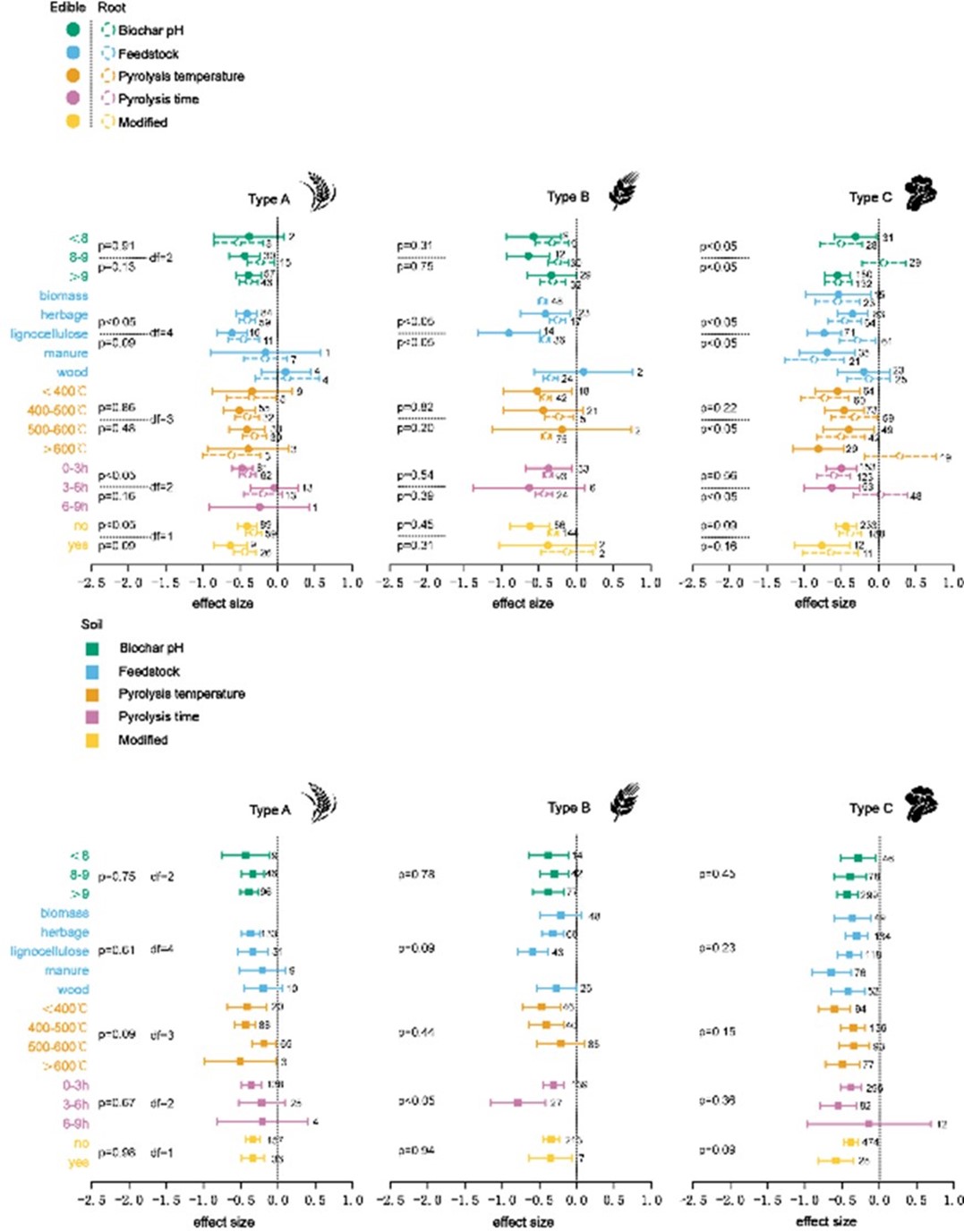A research team from the college of Resources & Environment of HZAU recently discovered a promising new solution for tackling the cadmium (Cd) pollution in farmland. The team from the State Environmental Protection Key Laboratory of Soil Health and Green Remediation made significant strides in assessing the effectiveness of biochar in different planting systems to combat this toxic pollutant. Their groundbreaking research was published in the prestigious Journal of Hazardous Material, and could hold the key to a greener, more sustainable future for agriculture.
Chinese farmland soils are threatened by Cd, the primary pollutant with high toxicity and mobility. Cd can accumulate in the edible parts of staple crops like rice, wheat, and corn, posing a significant risk to human health and safety. As concerns over it continue to rise, a new solution has emerged: biochar. Biochar, known for its in-situ, green, and sustainable characteristics, has been found to have great potential in reducing Cd pollution, as a result of which it has been widely used in the remediation and management of Cd-polluted soils. But the physicochemical properties of biochar are diverse, and its application scenarios are complex, causing a lack of unified cognition in its remediation effects.
The team thus performed meta-analysis to determine the effectiveness of using biochar to remediate Cd-polluted soil in various planting systems. Combining Single Meta-regression and Random Forest machine learning, the team also identified the key factors that influence the remediation process. The results indicated that biochar can significantly reduce Cd content in the soil, plant roots, and edible parts of crops, by 24.9% to 45.0%.
The research also identified key factors that affect the efficacy of biochar remediation, including the raw materials of biochar, application amount, pH, soil pH, and cation exchange capacity. The team discovered that biochar made from wood cellulose and herbaceous plants is suitable for all planting systems, while biochar made from feces, wood, and biomass limited effectiveness in paddy planting systems. By controlling the production conditions of biochar and matching it to applicable situations, the team suggested that remediation effect can be significantly improved while reducing environmental and economic costs. These findings provided a theoretical basis and technological support for precise and efficient remediation of polluted soil, thus promoting sustainable development of agriculture
Furthermore, the research revealed that the impact of biochar on rice soil lasted longer than its effect on upland soil. This discovery offered a promising solution to minimize the harmful effects of biochar aging and optimize remediation methods for soils polluted by heavy metal .

Impact of biochar's physicochemical properties and preparation parameters on cadmium bioavailability and bioaccumulation
The first author is Duan Zihao, a master student from the college of Resources & Environment of HZAU. The corresponding author is Dr. Chen Chang, a postdoctoral fellow. Other authors are Professor Tan Wenfeng, Professor Wang Zhen, Associate Professor Xiong Juan, Dr. Ni Chunlan, and Professor Cai Junxiong (Hubei Provincial Academy of Eco-Environmental Sciences). This research was supported by the National Natural Science Foundation and the Hubei Provincial Natural Science Foundation.
【Abstract】
Cadmium (Cd) poses great threats to human health as a major contaminant in agricultural soil. Biochar shows great potential in the remediation of agricultural soil. However, it remains unclear whether the remediation effect of biochar on Cd pollution is affected by various cropping systems. Here, this study used 2007 paired observations from 227 peer-reviewed articles and employed hierarchical meta-analysis to investigate the response of three types of cropping systems to the remediation of Cd pollution by using biochar. As a result, biochar application significantly reduced the Cd content in soil, plant roots and edible parts of various cropping systems. The decrease in Cd level ranged from 24.9% to 45.0%. The feedstock, application rate, and pH of biochar as well as soil pH and cation exchange capacity were dominant factors for Cd remediation effect of biochar, and their relative importance all exceeded 37.4%. Lignocellulosic and herbal biochar were found to be suitable for all cropping systems, while the effects of manure, wood and biomass biochar were limited in cereal cropping systems. Furthermore, biochar exhibited a more long-lasting remediation effect on paddy soils than on dryland. This study provides new insights into the sustainable agricultural management of typical cropping systems.
Link to the research:https://doi.org/10.1016/j.jhazmat.2023.130939
Source: http://news.hzau.edu.cn/2023/0301/65722.shtml
Translated by: Deng Yuxiang
